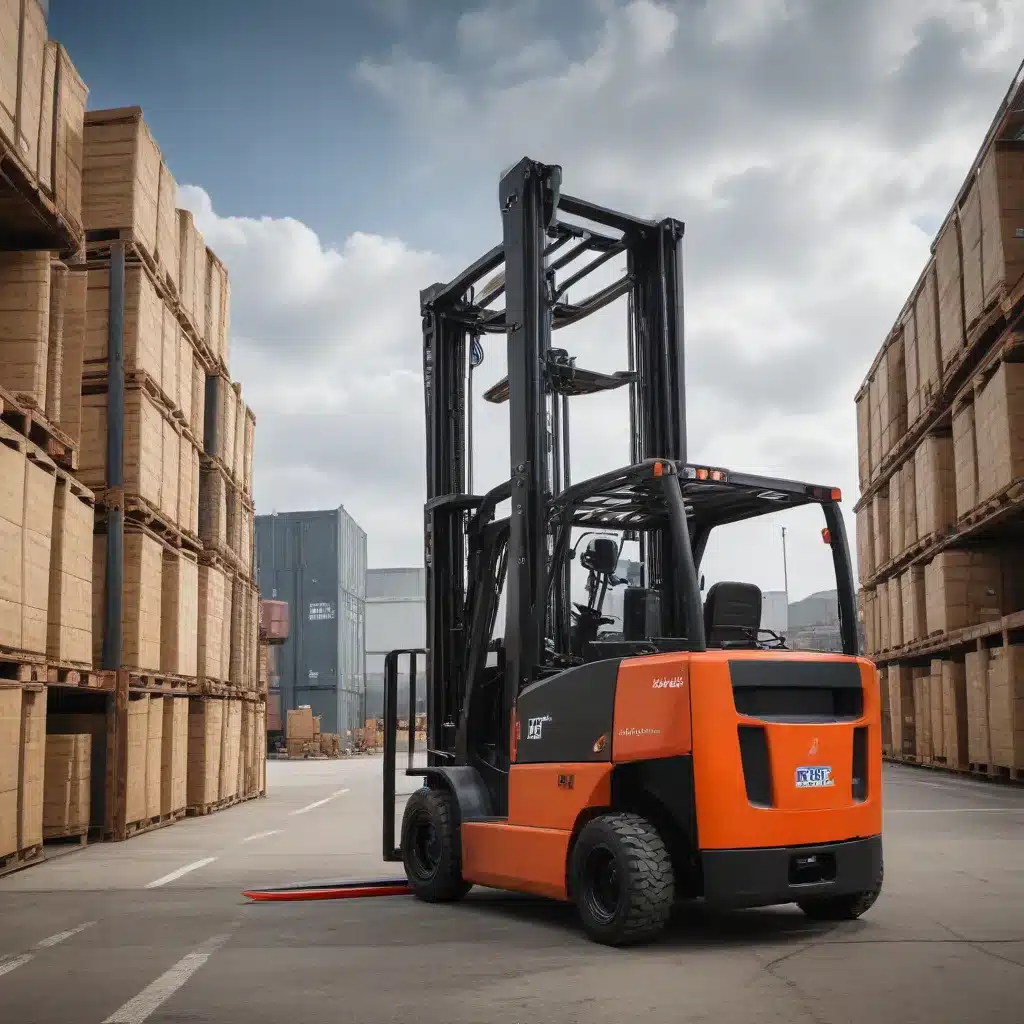
The Shift Towards Sustainable Material Handling
The material handling industry is undergoing a transformative shift, driven by the increasing adoption of electrification. As the world transitions towards a more sustainable future, the forklift market is at the forefront of this revolutionary change. Governments, corporations, and consumers alike are demanding greener solutions, and the industry is responding with a surge of innovative electric forklift technologies.
Breaking Free from Internal Combustion Engines
Internal combustion engine (ICE) forklifts have long been the industry standard, but the tide is turning. According to the Industrial Truck Association (ITA), the annual purchases of ICE forklifts have decreased from 77,588 in 2019 to 61,161 in 2020, while the electric forklift market has continued to grow. In 2019, 144,861 electric-powered equipment units were purchased, and in 2020, this number reached 135,163 – a clear indication that electrification is becoming the primary power source for the material handling industry.
The shift away from ICE forklifts is driven by several factors, including impending regulations, sustainability goals, and advancements in battery technology. Many countries, such as France, the UK, Germany, and Canada, are already planning to phase out petrol and diesel engine vehicles by 2030, and states like California in the U.S. are evaluating bans on gas-powered vehicles. As these regulations take effect, the material handling industry must prepare for a future without traditional ICE-powered equipment.
Embracing the Power of Electrification
The transition to electric forklifts offers a multitude of benefits that are compelling businesses to make the switch. Electrification not only supports decarbonization and sustainability initiatives but also provides performance advantages and operational efficiencies.
Lithium-ion battery technology has been a game-changer for the material handling industry. These advanced batteries can deliver ICE-like performance, with greater energy density, power transfer, and service life compared to their lead-acid counterparts. Lithium-ion-powered forklifts are now available in higher capacity ranges, from 15,500 to 19,000 pounds, and even up to 23,000 to 36,000 pounds for heavy-duty applications, such as those found in port settings.
Beyond the performance benefits, electric forklifts offer a more comfortable and ergonomic work environment for operators. With reduced noise, vibration, and zero tailpipe emissions, these vehicles create a healthier and more productive workspace. Additionally, the lower maintenance requirements of electric forklifts can help alleviate the strain on skilled labor, an ongoing challenge in the industry.
Navigating the Transition to Electrification
Transitioning a forklift fleet from ICE to electric power requires careful planning and preparation. Businesses must consider their specific operational needs, available infrastructure, and the total cost of ownership to ensure a successful transition.
Evaluating Battery Technologies
When it comes to choosing the right battery technology for your forklifts, the decision between lead-acid and lithium-ion batteries is a crucial one. While lead-acid batteries may have a lower upfront cost, lithium-ion batteries offer significant advantages in terms of energy efficiency, cycle life, and safety.
Lithium-ion batteries do not require a dedicated, ventilated charging room, as they do not emit the same hazardous fumes as lead-acid batteries. This allows for more flexible charging options, including opportunity charging, which can maximize equipment uptime and productivity.
Additionally, lithium-ion batteries provide excellent return on investment (ROI) due to their longer lifespan and reduced maintenance requirements. Businesses must carefully weigh these factors to determine the best battery solution for their specific needs.
Preparing the Infrastructure
Ensuring the right infrastructure is in place is a vital step in the electrification process. Businesses must plan for efficient charging bays, considering factors such as power supply, charging speed, and battery swap capabilities. With lithium-ion batteries, the need for a ventilated charging room is eliminated, providing more flexibility in layout and utilization.
Careful planning and organization are key to a successful fleet electrification. Businesses should work closely with their forklift and battery suppliers to understand the specific requirements and design a charging infrastructure that optimizes their operations.
Comprehensive Training and Maintenance
Proper training and regular inspections are essential for maintaining the safety and efficiency of any forklift fleet, regardless of the power source. When transitioning to electric forklifts, operators must receive comprehensive training on the unique features and maintenance requirements of lithium-ion battery packs.
This training should cover proper handling, charging, and troubleshooting procedures to ensure the longevity of the battery packs and the overall safety of the work environment. Regular inspections and preventative maintenance are also crucial to maximize the performance and lifespan of the electric forklifts.
Embracing the Future of Material Handling
The material handling industry is on the cusp of a remarkable transformation, and electric forklifts are leading the charge. As governments and corporations worldwide prioritize sustainability and decarbonization, the demand for cleaner, more efficient material handling solutions is growing exponentially.
Businesses that embrace this shift towards electrification will not only benefit from the performance advantages and operational efficiencies of electric forklifts but also contribute to a more sustainable future. By partnering with trusted Forklift Reviews and expert suppliers, companies can navigate the transition to electrification with confidence, ensuring a seamless and successful integration of this transformative technology into their material handling operations.
The future of material handling is electric, and the time to act is now. By powering the transition to sustainable lithium-ion battery technology, businesses can unlock the full potential of their forklift fleets and contribute to a greener, more efficient, and more productive material handling landscape.

